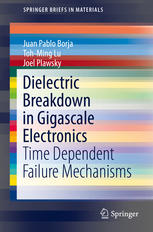

Most ebook files are in PDF format, so you can easily read them using various software such as Foxit Reader or directly on the Google Chrome browser.
Some ebook files are released by publishers in other formats such as .awz, .mobi, .epub, .fb2, etc. You may need to install specific software to read these formats on mobile/PC, such as Calibre.
Please read the tutorial at this link: https://ebookbell.com/faq
We offer FREE conversion to the popular formats you request; however, this may take some time. Therefore, right after payment, please email us, and we will try to provide the service as quickly as possible.
For some exceptional file formats or broken links (if any), please refrain from opening any disputes. Instead, email us first, and we will try to assist within a maximum of 6 hours.
EbookBell Team

0.0
0 reviewsThis book focuses on the experimental and theoretical aspects of the time-dependent breakdown of advanced dielectric films used in gigascale electronics. Coverage includes the most important failure mechanisms for thin low-k films, new and established experimental techniques, recent advances in the area of dielectric failure, and advanced simulations/models to resolve and predict dielectric breakdown, all of which are of considerable importance for engineers and scientists working on developing and integrating present and future chip architectures. The book is specifically designed to aid scientists in assessing the reliability and robustness of electronic systems employing low-k dielectric materials such as nano-porous films. Similarly, the models presented here will help to improve current methodologies for estimating the failure of gigascale electronics at device operating conditions from accelerated lab test conditions. Numerous graphs, tables, and illustrations are included to facilitate understanding of the topics. Readers will be able to understand dielectric breakdown in thin films along with the main failure modes and characterization techniques. In addition, they will gain expertise on conventional as well as new field acceleration test models for predicting long term dielectric degradation.